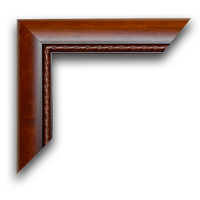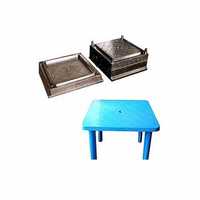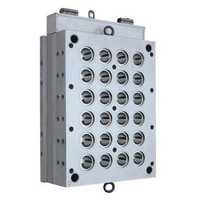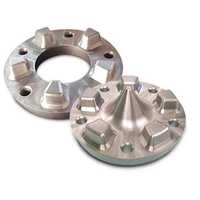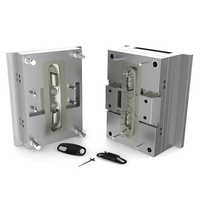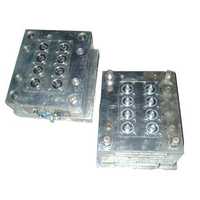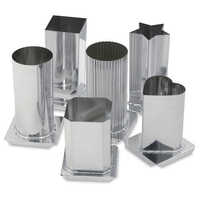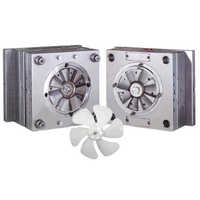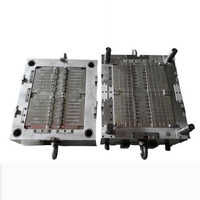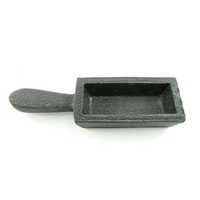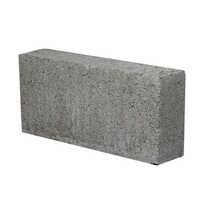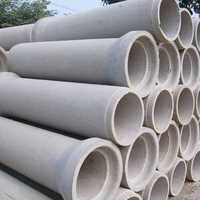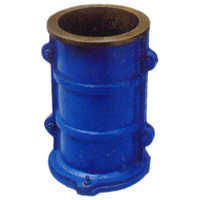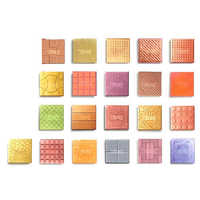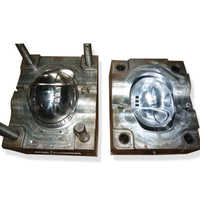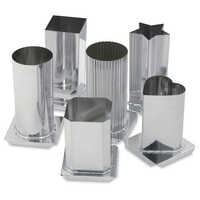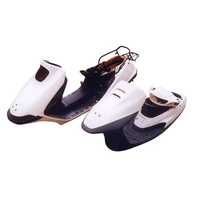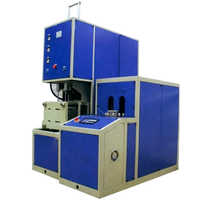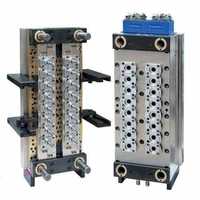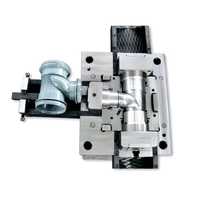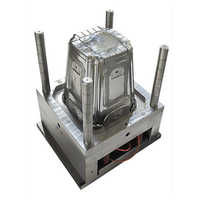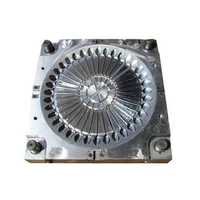Moulds
(20343 products)
Related Categories
Abrasives
Acoustic Products
Acrylic Sheets
Air Blowers
Air Compressors & Air Separation Plants
Air Cooler
Air Dryers
Air Receiver
Air Valves
Aluminum Castings
Anchors
Anti Vibration Mounts
Ball & Roller Bearings
Ball Valves
Ballast Making Machines
Bearing Parts & Components
Bearings
Bellows & Expansion Joints
Belt Pulleys
Boilers, Components & Spares
Bolts
Bright Bars
Bristles
Burners/Industrial Burners & Incinerators
Bushings & Bushing Parts
Butterfly Valves
CNC Machined Components
Cable Pulleys
Capital Goods
Carbon & Graphite Products
Castor Wheels
Centrifugal Pumps
Centrifuges
Ceramics
Chains & Chain Link Fence Fittings
Cleaning Equipment
Clips, Clamps
Coils
Combustion Equipment
Compression Springs
Compressors & Allied Equipment
Control Valves
Conveyor & Conveyor/Industrial Belts
Cooling Tower & Chilling Plants
Coupling
Cranes
Cryogenic Equipment
Cutting Tools, Broaches & Cutters
Departmental Shelving
Diaphragm Valves
Die Castings
Dies & Moulds
Dies,Jigs,Fixtures
Diesel Engine & Electric Locomotive Spares
Draught Fan
EOT Cranes
Electric Hoists
Electric Motors & Engines
Electroplating Chemicals & Equipment
Energy Management System
Engine Valves
Engineering Goods & Equipment
Engineering Plastics
Engraving Equipment
Extruded Profiles
Fasteners
Fiberglass Products
Filter Cartridges & Media
Filter Cloth, Filter Industrial
Filters-Air, Gas, Liquid
Filtration & Sedimentation Units
Flat Metal Processing Equipment
Float Valves
Fork Lift Truck Parts
Fork Lift Trucks
Forklifts
Foundry Raw Material & Equipment
Furnace Manufacturers
Galvanized Fasteners
Gantry Cranes
Gaskets
Gate Valves
Gauges & Gauge Glasses
Gear Boxes, Reduction Gears & Gear Cutting
Girder Cranes
Glass & Glass Products
Glass Cutting Tools/Glass Cutters
Globe Valves
Goliath Cranes
Grating
Hand & Allied Tools
Hand Pump
Hardware & Tools
Heat Exchangers
Heating Elements
Hex Bolts
Hex Nuts
Hooks & Mounts
Hoses
Hot Air Oven
Humidification & Ventilation Equipment
Hydraulic Hoses & Flexible Metal
Hydraulic Press
Hydraulic Press Brakes
Hydraulic Products & Equipment
Hydraulic Valves
Induction Heating Equipment
Industrial Automation
Industrial Brakes
Industrial Brushes
Industrial Clothing
Industrial Clutches
Industrial Cylinders
Industrial Dryers
Industrial Evaporators
Industrial Knives
Industrial Nets
Industrial Ovens
Industrial Rollers
Industrial Supplies Stocks
Industrial Supplies-General
Industrial Tape
Industrial Tools
Industrial Valves
Industrial Vibrator
Inspection Equipment
Instrumentation
Internal Combustion Engine
Jib Cranes
Laboratory Furniture
Laboratory Glassware & Equipment
Laundry Equipment
Lined Valves
Machine Tools Accessories
Marking Systems
Material Handling Equipment
Measuring Tools & Equipment
Mechanical Seals
Metallised Capacitor Films
Mining Equipment
Mining, Exploration & Drilling Machinery
Model Making Materials
Motor Couplings
Moulded Components
Moulds
Needle Valves
Needles
Nuts
Oil Seals
Outdoor Cooling Systems
Overhead Cranes
PVC Hoses
PVC Products
Paint Brushes
Painting Equipments & Maintenance
Perforated Sheets
Plastic Processing Machinery Parts
Plastic Valves
Plastic Welding Equipment
Plate Valves
Plug Valves
Pneumatic Products & Tools
Pneumatic Valves
Polish & Polishing Material/Machinery
Power Press
Precision Brass Components
Pressed Components
Pressure Gauges
Pressure Vessels
Pulleys
Pulverizers
Pump Spares Parts
Pumps & Pumping Equipment
Radiators
Refrigeration & Equipment
Rope Pulleys
Rope,Twines & Webbings
Ropes
Rotary Valves
Rubber & Rubber Products
Rubber Gaskets
Rubber Roller
Rubber Seals
Rubber Transmission Belts
Screws
Seals
Sensors & Transducers
Shaft Couplings
Shafts & Shaft Collars
Sheet Metal Components & Parts
Solenoid Valves
Springs
Stainless Steel Bolts
Stainless Steel Fasteners
Stainless Steel Nuts
Stainless Steel Valves
Storage Systems
Storage Tanks
Submersible Pumps
Surface Finishing Equipment
Synthetic Industrial Diamonds
Thermostatic Bimetals & Thermostats
Trolleys & Carts
Tungsten Carbide
Ultrasonic Equipment
V-Belts
Vacuum Equipment & System
Valves
Valves Fittings
Vibrating Screen
Washers
Water Coolers
Weighbridge
Welding & Soldering Supplies
Welding Electrodes
Welding Equipment
Winches
Wire Drawing Dies
Wire Rope Hoists
Wire Ropes
Explore More Categories
Black Industrial Rubber Diaphragm
Price: 50 INR (Approx.)/Piece
MOQ - 100 Piece/Pieces
Product Type - Industrial Rubber Diaphragm
Color - Black
Usage - Industrial
9 Years
Business Type: Manufacturer | Distributor
KP RUBBER & POLYMER
Indian Inquiries Only
PVC Paver Mould
Price: 550 INR (Approx.)/Piece
MOQ - 250 Piece/Pieces
Mold Base - Plastic
Usage - Industrial
Size - Different Available
3 Years
Business Type: Manufacturer | Supplier
J K TILES MACHINERY
Corrugated Box Shredder Cutting Speed: 35 Rpm
Price: 330000 INR (Approx.)/Unit
MOQ - 1 Unit/Units
Weight - 60 to 1500 Kilograms (kg)
Type - Sherdder machine
Use - Corrugated Box , cardboard shredder
17 Years
Business Type: Manufacturer | Exporter
AMEY ENGINEERS
Crack Resistant Portable And Durable Rubber Paver Mould
Product Type - Rubber Paver Mould
Usage - Commercial
Color - Red
10 Years
Response Rate: 75.00%
Business Type: Manufacturer | Distributor
LAXMI ENGINEERING WORKS
Silver And Blue Ms Cube Mould
Price: 2000 INR (Approx.)/Unit
MOQ - 1 Unit/Units
Product Type - MS Cube Mould
Size - Different Size
Usage - Industrial
3 Years
Business Type: Supplier | Exporter
ADRIJA SCIENTIFIC INSTRUMENT COMPANY
Wall Pebble Plastic Mould
Price: 30 INR (Approx.)/Piece
MOQ - 100 Piece/Pieces
1 Years
Business Type: Manufacturer
SAMAR BUILDWARE PRODUCTS
Indian Inquiries Only
Metal Soil Proctor Mould
Price: 1800 INR (Approx.)/Piece
MOQ - 10 Piece/Pieces
Usage - Industrial
Size - Customize
Material - Metal
6 Years
Business Type: Trading Company
YESHA LAB EQUIPMENTS
Indian Inquiries Only
PVC Wall Tile Mould
Price: 160 INR (Approx.)/Kilograms
MOQ - 100 Kilograms/Kilograms
Product Type - Paver Mould
Material - Other
4 Years
Business Type: Manufacturer
MAURYA MOULD INDUSTRIES
Indian Inquiries Only
Pvc Rubber Block Mould Mould Weight: 0.5 - 1.90 Kilograms (Kg)
MOQ - As per customer requirment , Piece/Pieces
Molding Material - PVC
Material - Other
Mould Weight - 0.5 - 1.90 Kilograms (kg)
6 Years
Business Type: Manufacturer | Distributor
POSSIBLE MACHINES
MS Brick Mould 15 Cavity
Price: 50000.00 - 150000.00 INR (Approx.)/Set
MOQ - 10 Set/Sets
7 Years
Business Type: Manufacturer | Exporter
KAILASH ENGINEERING
Cement Concrete Tile Lacquer polish making machine
Price: 50000 INR (Approx.)/Piece
MOQ - 1 Piece/Pieces
10 Years
Response Rate: 98.46%
Business Type: Manufacturer | Exporter
JS DESIGNER TILES PRODUCT
Indian Inquiries Only
Blue Silicone Soap Cake Mould
Price: 750 INR (Approx.)/Piece
MOQ - 100 Piece/Pieces
Product Type - Silicone Soap Cake Mould
Color - Blue
Shaping Mode - Silicone Mould
5 Years
Business Type: Manufacturer | Distributor
SURESH ENTERPRISES
Gray Hdpe Container Mould
Price: 200000 INR (Approx.)/Piece
MOQ - 1 Piece/Pieces
Product Type - Hdpe Container Mould
Color - Gray
Usage - Industrial
2 Years
Business Type: Manufacturer | Supplier
AASTHA ENTERPRISES
Concrete Chair Mould
Price: 200.00 - 250.00 INR (Approx.)/Piece
MOQ - 100 Piece/Pieces
14 Years
Business Type: Manufacturer | Exporter
ROYAL TILE MACHINES
Cube Mould
Price: 750 INR (Approx.)/Set
MOQ - 1 Set/Sets
13 Years
Response Rate: 89.16%
Business Type: Manufacturer | Exporter
BALAJI CONSTRUCTION MACHINERY
1.5Kg Silicon Loaf Mold Wooden Cavity: 8
Price: 550 INR (Approx.)/Piece
MOQ - 10 Piece/Pieces
Size - 1.5 Kg
Cavity - 8
Mold Base - Wood, Silicon
Business Type: Supplier | Exporter
ART VATIKA INSTITUTE
Industrial Soap Moulds
Price: 100000.00 - 800000.00 INR (Approx.)/Set
MOQ - 1 Set/Sets
Product Type - Soap Mould
Usage - Industrial
20 Years
Business Type: Manufacturer | Exporter
MAHALAXMI ENGINEERING WORK
Moulds Manufacturers | Suppliers in India
| Company Name | Location | Member Since |
|---|---|---|
| Mahalaxmi Engineering Work | Mumbai, India | 20 Years |
| Everest Composites Pvt. Ltd. | Vadodara, India | 17 Years |
| Amey Engineers | Dombivli, India | 17 Years |
| Drishti Polymers | Ahmedabad, India | 17 Years |
| Royal Tile Machines | New Delhi, India | 14 Years |
| Arco Industrial Products | Vadodara, India | 13 Years |
| Balaji Construction Machinery | Rajkot, India | 13 Years |
| Shanghai Fude Machinery Manufacturing Co., Ltd. | Shanghai, China | 12 Years |
| Panchasara Machine Tools | Jamnagar, India | 11 Years |
| Laxmi Engineering Works | Ahmedabad, India | 10 Years |
What is mould?
Introduction
A mold is a tool used in manufacturing that is designed to create objects of a specific design and dimensions. When producing goods on an industrial scale, metal and non-metal materials are often shaped under pressure using a press and specialized tools attached to the press. Molds are a general term for a class of specialized instruments used for casting.
A mold is a typical piece of equipment in today's factories. Under high pressure, a malleable material like plastic, glass, metal, or ceramic raw material is forced into a hollowed-out block. Within the confines of the mold, the material sets, becoming the form of the final product. Injection molds, metal-plastic forming molds, and casting molds are just a few examples of the many different types of molds that exist.
Moulds: Design & Sizes
1. Oversize Design
Mould dimensions must account for the considerable shrinkage of MIM parts in the process steps after injection molding, namely binder removal and, more importantly, sintering. To empirically determine the shrinkage, we use the dimensions of the mold cavity to calculate the linear shrinkage of a 26-30 mm long by 4-6 mm broad rectangular bar.
Most of the time, the percentage of reduction may be calculated simply by multiplying the value by 100. The tool cavity extension factor Z accounts for material shrinkage when calculating the final component size L. Z = (mold dimension L0) / (final component size L).
2. Tire Mould design
To create a tire mould, it's necessary to first calculate the tire's inflated measurements. Preliminary plyline and mold dimensions are calculated using the inflated tire and the tire's growth characteristics. The tread, shoulder, sidewall, and bead contours can be determined when the mold boundary measurements, plyline position, and tread width and depth are all set.
3. Molded in-insert
Depending on the shape, number, and purpose of the insert will determine the best way to secure it. As a whole, molded-in inserts can be broken down into two categories.
When the dimensional accuracy of a molded section is inadequate, or when the wall thickness or mold dimensions make rotational molding impracticable, plastic inserts are utilized.
Tank access is a classic case in point because of the need for a bung or threaded spout to match with either metal or main plastic fitting. Pipe fittings like elbows, tees, and Ys are another example of applications where the interior dimension of the molded item must be accurate.
| Size | 18.9inch. x 29.6 inch. X 8inch. |
| Volume | 59cu.inch. |
| Depth | 4inch from parting line Up to 8 inch. If parting line can pass through the middle of the part |
| Projected Mould Area | 175 sq. in. |
Types of Moulds
1. Two/Three Plate
With three-plate Moulds, you may place the injection point wherever you like on the tool, even though it is still a cold runner tool because of the third plate in the runner system. In most cases, this is less expensive than installing a hot runner system, although automated processes can be complicated by the big, cumbersome runners used in these molds.
2. Insulated Runner Moulds
Insulated runner tools are similar to conventional cold runner molds, but they employ cartridge heaters or other means of heating to create an insulating ""cull"" of molten resin around the mold's perimeter.
Compared to employing a hot runner, which necessitates the purchase of a temperature controller, this method is more cost-effective. In some cases, such as when working with more demanding industrial grade resins, insulated runners are ineffective.
3. Cold Runner Molds
By using sprues and runners to gate into the component, classical tooling is exemplified by cold runner molds. This is the simplest version, however it can lead to more wasted materials and longer startup and shutdown times.
While the physical characteristics of the resin may be compromised, a certain amount of scrap may be reground and processed for future use, depending on the application.
If you're working with high-end, expensive materials like engineering or medical grade resins, or if regrind won't work for your application, a hot runner mold could be the way to go.
4. Hot Runner Molds
Hot runner tools employ a temperature-controlled manifold to drastically cut down on or do away with runner scrap altogether during the cycle. Both external and internal injection locations can be used.
Because the sprue or runner system is generally the deciding factor on the mold cycle, this can considerably improve cycle times. Getting rid of the runner also helps prevent the unnecessary waste of valuable resources.
A temperature controller, scaled to fit the manifold in the mold, is needed to run hot runner molds in a press. While hot runner tools have more extensive mold maintenance needs, the initial investment is usually recouped in reduced production time and material costs.
5. Unscrewing Moulds
The most frequent technique for making threaded holes inside a plastic component is to use molds that unscrew. Hydraulic motors, electric, or Rack-and-pinion are used for the automatic rotation of the threaded features in these molds, which are then used to extract the undercut features from the mold.
The thread extraction process is a continuous operation that is linked to the pressing cycle, allowing for the extraction of both internal and external threads. With multi-shot / multi-component tooling, a designer can simultaneously apply two or more distinctly different materials to a single part throughout the manufacturing process.
Materials might vary for a number of reasons, including their physical qualities or even their aesthetic appeal. These molds typically incorporate several manifolds into a single die. In addition to accommodating color variants throughout an entire product line, multi-shot tooling can be an elegant solution for complex items
The use of multi-shot tooling necessitates the use of specialized presses and molds. Possible future requirements include a rotary mold, several machine nozzles, and hot runner systems.
Manufacturers may not currently carry any multi-shot molding presses, but designers have a great deal of background working with complex machinery of this type.
6. Family Moulds
Unlike single-cavity molds, which can only produce one type of part, family molds can produce multiple variations from a single mold base. All the pieces can be made at once, or individual molds can be made for certain mold cavities with the use of shutoffs.
If you want to run all of the components at once, it's better if they have the same dimensions, shape, resin, and expected volume for the best molding results. Piece separation could be an automated process that occurs during or after production.
Using a family mold can help you save money and provide you more options if you're making low quantities.
7. Low and High Cavitations mold
Because of their limited capacity, single-cavity molds can only mass-produce a single product every cycle. Considering the minimal setup costs, they are a viable option for low-volume production runs. As an added bonus, their turnaround time is quicker. The downside is an increase in the per-part cost of molding production.
Molds with several cavities can increase output. More parts can be manufactured in the same amount of time, which means higher capacity and reduced component part costs.
How is mould formed?
For each product, a mold designer is responsible for conceptualizing and sketching the mold's internal structure to meet the product's functional specifications (part). The mold will then be made by experienced employees using a variety of mechanical methods to replicate the design. After that, the mold is put together and tested until it can create quality goods.
- Mold design: The viability of using a mold to manufacture the required items is first investigated. After that, the mold diagram is created and checked for errors.
- Mold Processing: A machine tool is used to cut the mold prototype into the specified form.
- Mold testing: The assembly of the mold and mold base is followed by testing and fine-tuning.
Because mold shapes can be somewhat complicated, and because some products have stringent demands for structural strength, stiffness, surface hardness, surface roughness, and machining precision, mold fabrication necessitates sophisticated machinery.
Conclusion
Hope you have got the need of industrial mould and molding process. In most cases, the molding equipment uses an automatic, self-gating tool to maintain efficiency and continuous production with a minimum of human intervention. In injection molding, a substance that is either liquid or melted is injected into a casting, sometimes called a mold, where it takes on the shape of the casting. In most cases, molds will have a male and female half, and the molten material will be injected into the space between the two halves.
FAQs: Moulds
Q. How is mould made?
Ans. Steel or aluminum is typically used to construct moulds, and then they undergo a precise machining process to achieve the desired details.
Q. What is a mould used for?
Ans. A mould is a tool used in manufacturing that is designed to replicate an object exactly. Industrial production molds used in injection molding, shaping, melting, extrusion, die casting, blow molding, forging, and more.
Q. What is the purpose of mould?
Ans. Moulds are the "mother" of industrial production because they are the essential building block of the manufacturing process. The mould is one of the most extensively utilized pieces of process equipment in today's industrial production because of its high quality, high yield, material savings, and low cost.
Q. What is the difference between mold and mould?
The word “Mold” is frequently spelled in American English, on the other side, the word “Mould” is spelled in British English. But both are the same.
Related Categories
Related Categories
Abrasives
Acoustic Products
Acrylic Sheets
Air Blowers
Air Compressors & Air Separation Plants
Air Cooler
Air Dryers
Air Receiver
Air Valves
Aluminum Castings
Anchors
Anti Vibration Mounts
Ball & Roller Bearings
Ball Valves
Ballast Making Machines
Bearing Parts & Components
Bearings
Bellows & Expansion Joints
Belt Pulleys
Boilers, Components & Spares
Bolts
Bright Bars
Bristles
Burners/Industrial Burners & Incinerators
Bushings & Bushing Parts
Butterfly Valves
CNC Machined Components
Cable Pulleys
Capital Goods
Carbon & Graphite Products
Castor Wheels
Centrifugal Pumps
Centrifuges
Ceramics
Chains & Chain Link Fence Fittings
Cleaning Equipment
Clips, Clamps
Coils
Combustion Equipment
Compression Springs
Compressors & Allied Equipment
Control Valves
Conveyor & Conveyor/Industrial Belts
Cooling Tower & Chilling Plants
Coupling
Cranes
Cryogenic Equipment
Cutting Tools, Broaches & Cutters
Departmental Shelving
Diaphragm Valves
Die Castings
Dies & Moulds
Dies,Jigs,Fixtures
Diesel Engine & Electric Locomotive Spares
Draught Fan
EOT Cranes
Electric Hoists
Electric Motors & Engines
Electroplating Chemicals & Equipment
Energy Management System
Engine Valves
Engineering Goods & Equipment
Engineering Plastics
Engraving Equipment
Extruded Profiles
Fasteners
Fiberglass Products
Filter Cartridges & Media
Filter Cloth, Filter Industrial
Filters-Air, Gas, Liquid
Filtration & Sedimentation Units
Flat Metal Processing Equipment
Float Valves
Fork Lift Truck Parts
Fork Lift Trucks
Forklifts
Foundry Raw Material & Equipment
Furnace Manufacturers
Galvanized Fasteners
Gantry Cranes
Gaskets
Gate Valves
Gauges & Gauge Glasses
Gear Boxes, Reduction Gears & Gear Cutting
Girder Cranes
Glass & Glass Products
Glass Cutting Tools/Glass Cutters
Globe Valves
Goliath Cranes
Grating
Hand & Allied Tools
Hand Pump
Hardware & Tools
Heat Exchangers
Heating Elements
Hex Bolts
Hex Nuts
Hooks & Mounts
Hoses
Hot Air Oven
Humidification & Ventilation Equipment
Hydraulic Hoses & Flexible Metal
Hydraulic Press
Hydraulic Press Brakes
Hydraulic Products & Equipment
Hydraulic Valves
Induction Heating Equipment
Industrial Automation
Industrial Brakes
Industrial Brushes
Industrial Clothing
Industrial Clutches
Industrial Cylinders
Industrial Dryers
Industrial Evaporators
Industrial Knives
Industrial Nets
Industrial Ovens
Industrial Rollers
Industrial Supplies Stocks
Industrial Supplies-General
Industrial Tape
Industrial Tools
Industrial Valves
Industrial Vibrator
Inspection Equipment
Instrumentation
Internal Combustion Engine
Jib Cranes
Laboratory Furniture
Laboratory Glassware & Equipment
Laundry Equipment
Lined Valves
Machine Tools Accessories
Marking Systems
Material Handling Equipment
Measuring Tools & Equipment
Mechanical Seals
Metallised Capacitor Films
Mining Equipment
Mining, Exploration & Drilling Machinery
Model Making Materials
Motor Couplings
Moulded Components
Moulds
Needle Valves
Needles
Nuts
Oil Seals
Outdoor Cooling Systems
Overhead Cranes
PVC Hoses
PVC Products
Paint Brushes
Painting Equipments & Maintenance
Perforated Sheets
Plastic Processing Machinery Parts
Plastic Valves
Plastic Welding Equipment
Plate Valves
Plug Valves
Pneumatic Products & Tools
Pneumatic Valves
Polish & Polishing Material/Machinery
Power Press
Precision Brass Components
Pressed Components
Pressure Gauges
Pressure Vessels
Pulleys
Pulverizers
Pump Spares Parts
Pumps & Pumping Equipment
Radiators
Refrigeration & Equipment
Rope Pulleys
Rope,Twines & Webbings
Ropes
Rotary Valves
Rubber & Rubber Products
Rubber Gaskets
Rubber Roller
Rubber Seals
Rubber Transmission Belts
Screws
Seals
Sensors & Transducers
Shaft Couplings
Shafts & Shaft Collars
Sheet Metal Components & Parts
Solenoid Valves
Springs
Stainless Steel Bolts
Stainless Steel Fasteners
Stainless Steel Nuts
Stainless Steel Valves
Storage Systems
Storage Tanks
Submersible Pumps
Surface Finishing Equipment
Synthetic Industrial Diamonds
Thermostatic Bimetals & Thermostats
Trolleys & Carts
Tungsten Carbide
Ultrasonic Equipment
V-Belts
Vacuum Equipment & System
Valves
Valves Fittings
Vibrating Screen
Washers
Water Coolers
Weighbridge
Welding & Soldering Supplies
Welding Electrodes
Welding Equipment
Winches
Wire Drawing Dies
Wire Rope Hoists
Wire Ropes
